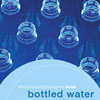Green 101: Policies
Each Responsible Purchasing Guide features a variety of sample policies specifically addressing the product category covered by the Guide. The policies below are examples of more comprehensive policies covering a wide array of goods and services.
Click on a policy to read more about it and download a pdf copy.
Federal
Dept. of Defense, Green Procurement Strategy, 2006
Dept. of Health and Human Services, Affirmative Procurement Plan, 2006
EPA, Resource Conservation and Recovery Act, Section 6002 (CPG)
EPA, Executive Order 13423 (CPG)
House of Representatives, Green the Capitol Initiative, 2007
White House, Environmental, Energy, and Transportation Management, 2007
State
California, Public Contract Code (Section 12400-12404), n.d.
California, Public Contract Code section 12200 (SABRC)
California EPA, Transportation Policy, undated
Commonwealth of Virginia, Executive Order 48, 2007
Green Electronics Bidding and Procurement in Massachusetts Program Summary_2008
Illinois, Executive Order for Green Activities, 2001
Manitoba, Canada, Sustainable Development Procurement Guidelines, 2000
New Jersey, Executive Order 11, 2006
New York, Executive Order 4, 2008
New York, Executive Order 134, n.d
State of New Mexico Climate Change Executive Order, 2006
State of North Carolina Executive, Order 156
State of Iowa, Executive Order 6
Washington, Executive Order 04-01 on Persistent Toxic Chemicals, 2004
Wisconsin, Executive Order 145, 2008
County
Alameda County Waste Management Authority (StopWaste.org), Model EPP Policy, 2009 (Revision)
California, Executive Order S-20-04, 2004
King County, WA, Environmentally Preferable Purchasing Policy, 1995
Los Angeles County, CA, Green Purchasing Policy, 2007
Nevada County, CA, Green Procurement and Sustainable Practices Policy, 2002
County of Sacramento, Environmental Purchasing Policy
City
Berkeley, CA, EPP Policy, 2004
Portland, OR, Sustainable Procurement Policy, 2008
Seattle, WA, Sustainable Purchasing Policy, 2003
City of Pittsburg Recycled Products Procurement Policy_2007
ICLEI- Local Governments for Sustainability (Europe) Procura+ Manual, 2nd Edition
Educational Institution
CU Boulder, Environmentally Responsible Purchasing Policy, 2006
Duke University, EPP Guidelines, 2007
Northern Arizona University, Campus Sustainability Strategy Plan, 2003
Rutgers, Green Purchasing Policy, 2006
University of California System, Policy on Sustainable Practices, 2007
University of Florida, Environmental Purchasing Policy, 2003
University of Florida, Sustainable Purchasing Directive, 2007
Villanova University, Green Purchasing Policy, 2001
============================================================
Federal
Dept. of Defense (DoD), Green Procurement Strategy, 2006
An agency-wide strategy for implementing an effective green procurement program to educate employees, reduce solid waste and energy use, conserve natural resources, and expand markets for green products.
Dept. of Health and Human Services, Affirmative Procurement Plan, 2006
Reinforces HHS’ three key environmental initiatives, i.e. green building, EPP and sustainable operations, by calling for the purchase of EPA-designated recycled content products and environmentally preferable products and services.
EPA, Resource Conservation and Recovery Act 1976, Section 6002 (CPG)
Under Section 6002 of this act, Congress the EPA to list any products that are or can be made from recovered materials in the Comprehensive Procurement Guidelines (CPG). There are 8 product types outlined in the CPG; construction, landscaping, non-paper supplies, paper, park, transportation, vehicular, and miscellaneous products. If the EPA designates a product type to this list, all federal agencies must purchase those products meeting CPG designated minimum recovered content requirements
EPA, Executive Order 13423, 2007 (CPG)
This Executive Order sets goals in the 8 categories of the Comprehensive Procurement Guidelines of the EPA. In addition the order requires more widespread use of Environmental Management Systems as the framework in which to manage and continually improve these sustainable practices.
House of Representatives, Green the Capitol Initiative, 2007
Recommends the house operate in a carbon neutral manner by shifting to renewable electricity, aggressively improving energy efficiency (including retrofitting lighting), adopting sustainable business practices, continuing leadership on sustainability issues, and offsetting any additional carbon emissions.
White House, Environmental, Energy, and Transportation Management, 2007
An Executive Order outlining conservation and efficiency practices for federal agencies to follow, including explicit reference to procurement in section 2d.
State
California, Public Contract Code (Section 12400-12404), n.d.
Designates the California Department of General Services as the state’s primary resource on the development and implementation of EPP programs.
California, Public Contract Code section 12200 (SABRC)
This policy states a commitment to reducing solid waste, to promote reuse and recycling, and to support business development in California. State agencies are instructed, with the assistance of the State Agency Buy Recycled Campaign (SABRC), to purchase recycled and remanufactured products. The 11 product categories outlined in SABRC are anti-freeze, compost, glass, oils, paint, paper, plastic, printing paper, metal, tires, and tire-derived products.
California EPA, Transportation Policy, undated
Encourages the reduction in environmental impacts attributable to employees' job related travel.
Illinois, Executive Order for Green Activities, 2001
Part of the "Green Illinois" initiative, state executive agencies are given guidelines on improving the environmental efficiency of their facilities and operations.
Iowa Green Government Executive Order 6, 2008
Sets up a task force that will work to improve energy efficiency of state buildings, promote resource efficient procurement practices, increase the use of biofuels by state agencies, reduce vehicle miles traveled by state employees and improve the fuel efficiency of state vehicles.
Manitoba, Canada, Sustainable Development Procurement Guidelines, 2000
Addresses the impact of responsible institutional purchasing on environmental, social and economic sustainability and includes consequent goals, action plans and staffing responsibilities.
New Jersey. Executive Order 11, 2006
Requires purchase of energy efficient, renewable energy, recycled, low toxicity products, affording a 15% price premium for said responsible products.
New York State, Executive Order No. 4: Establishing a State Green Procurement and Agency Sustainability Program, 2008
Establishes Interagency Committee on Sustainability and Green Procurement, outlines key green procurement criteria, requires applicable staff training, and stipulates progress reporting.
New York. Executive Order 134
Directs state agencies to reduce the environmental impact when cleaning state facilities by using less hazardous cleaning products in the workplace.
State of North Carolina Executive, Order 156
Promotes state agencies to maximize their environmental efforts through the procurement of goods that reduce waste, have less impact on human health and contain recycled materials.
State of New Mexico. Climate Change Executive Order, 2006
Emmission reductions strategies through procurement rules that ensure energy efficient appliances in state government offices and the use of clean renewable fuels in state vehicles.
Commonwealth of Virginia, Executive Order 48, 2007
Executive branch angencies and institutions are given a goal of reducing their their non renewable energy costs by 20 percent by fiscal year 2010. Agencies and institutions shall reach this goal by buying florescent lights, purchasing renewable energy, renovating buildings using LEED certification and use of forest products with alternative certification.
Washington, Executive Order 04-01 on Persistent Toxic Chemicals, 2004
Requires agencies to choose mercury-free and low-mercury products when mercury-free replacements are not offered in the marketplace.
Wisconsin. Executive Order 145, 2008
Calls for the incorporation of high performance green building standards into the design, construction and operation processes of state buildings.
County
Alameda County Waste Management Authority (Stopwaste.org), Model EPP Policy, 2009 (Revision)
States key issues, priorities and implementation strategies and serves as a template for any responsible purchasing policy.
California. Executive Order S-20-04, 2004
State Energy Agencies adopt the Energy Action Plan to increase energy efficiency by 20% by 2015 through the procurement of Energy Star electric equipment.
King County, WA, Environmentally Preferable Purchasing Policy, 1995
Requires all King County departments, offices and agencies to purchase recycled content and other environmentally preferable products whenever practicable.
Los Angeles County, CA, Green Purchasing Policy, 2007
Policy passed in June 2007 that requires County agencies to purchase products that minimize environmental impacts, toxics, pollution, and hazards to worker and community safety to the greatest extent practicable. The policy states that products should include recycled content, be durable and long-lasting, conserve energy and water, reduce greenhouse gas emissions, and meet an array of other criteria.
Green Electronics Bidding and Procurement in Massachusetts Program Summary_2008 Operational Services Division is coordinating the Commonwealth’s increased purchasing of environmentally preferable products. These products include goods that contain recycled materials, minimize waste, conserve energy, conserve water and contain few toxic materials.
Nevada County, CA, Green Procurement and Sustainable Practices Policy, 2002
Focuses on waste reduction, designates a responsible purchasing team, outlines operations improvements and departmental responsibilities and requires program monitoring.
Ohio. Executive Order 2007-02
The Department of Administrative services is required to develop and implement a plan for the increased use of alternative fuels and hybrid electric vehicles in motor vehicle fleets operated by the state government.
County of Sacramento, Environmental Purchasing Policy
In order to meet its goes of 50% reduction of material going to landfills, the Public Works Agency of Sacramento recommends the market development and use of recycled/recyclable materials. Agencies should also review packaging options that generate less waste.
City
Berkeley, CA, EPP Policy, 2004
Modeled after Stopwaste.org’s policy template, focuses on energy and water conservation, as well as toxics and waste reduction and includes a list of relevant purchasing-related ordinances and resolutions within the City.
Seattle, WA, Sustainable Purchasing Policy, 2003
Requires the purchase and use of materials, products and services that reduce resource consumption and waste, promote opportunities to lesser-advantaged segments of the community, and promote human health and well-being.
City of Pittsburg Recycled Products Procurement Policy_2007
This policy calls upon City departments to increase use of products with recycled materials whenever practical. To implement this policy, each department should include the use of products with recycled content in their contracts and specifications and establish important criteria for the purchase of goods.
ICLEI- Local Governments for Sustainability (Europe) Procura+ Manual, 2nd Edition
A guide to cost-effective sustainable public procurement. Advice on implementing sustainable procurement in practice for any European public authority, including cost issues, a management model, key purchasing criteria and a tool for monitoring performance.
Educational Institution
Colorado University at Boulder, Environmentally Responsible Purchasing Policy, 2006
Includes national trends in higher education initiatives in responsible purchasing and CU’s current actions and future purchasing goals.
Duke University, EPP Guidelines, n.d.
Modeled after Stopwaste.org’s EPP policy, elaborates on source reduction, recycled content products, energy and water savings, landscaping, toxics and pollution and forest conservation as its main areas of focus.
Northern Arizona University, Campus Sustainability Strategy Plan, 2003
Integrates responsible purchasing goals into NAU’s overall sustainability plan. Product categories considered include food, energy, vehicles and low-toxicity items.
Rutgers, Green Purchasing Policy, 2006
Sets goals on both ends of the product lifecycle by specifying responsible acquisition and recycling for a variety of products.
University of Florida, Environmental Purchasing Policy, 2003
Includes overarching responsible purchasing language, a list of considered products, responsibilities of departments and additional resources on responsible procurement.
University of Florida, Sustainable Purchasing Directive, 2007
Includes overall responsible purchasing language, department responsibilities, best practices and procurement strategies, current guidelines and goals, socially responsible purchasing standards, responsible procurement resources, and a glossary of terms.
University of California System, Policy on Sustainable Practices, 2007
Section VII sets guidelines and implementation procedures for system-wide environmentally preferable purchasing practices.
Villanova University, Green Purchasing Policy, 2001
This document outlines a set of criteria for choosing environmentally preferable products and includes detailed language to be included in bid specification documents.
Feedback on this Guide
Please contact us with corrections, additions, policies, or questions.
![]() Submit Feedback
Submit Feedback








